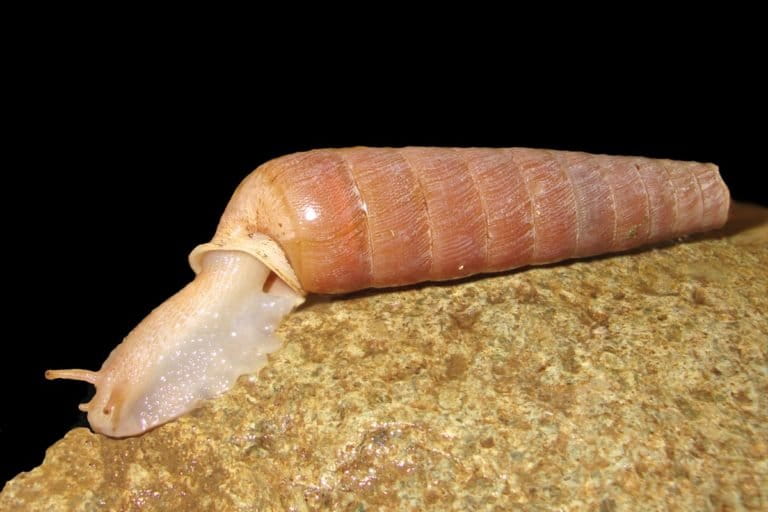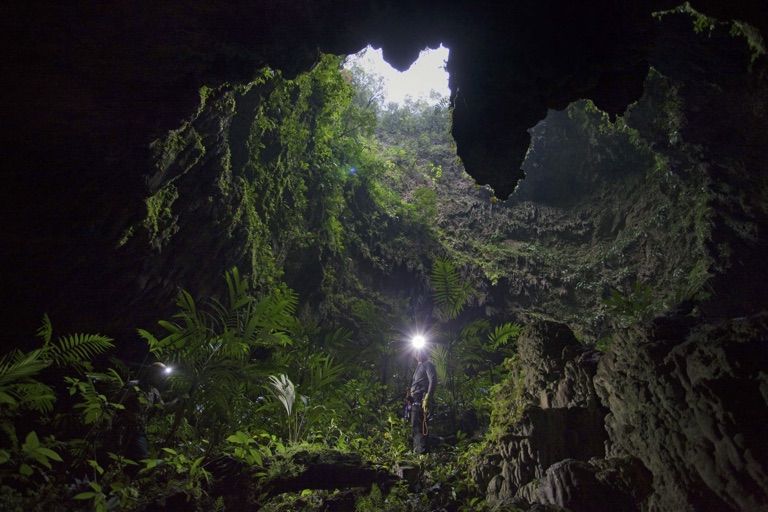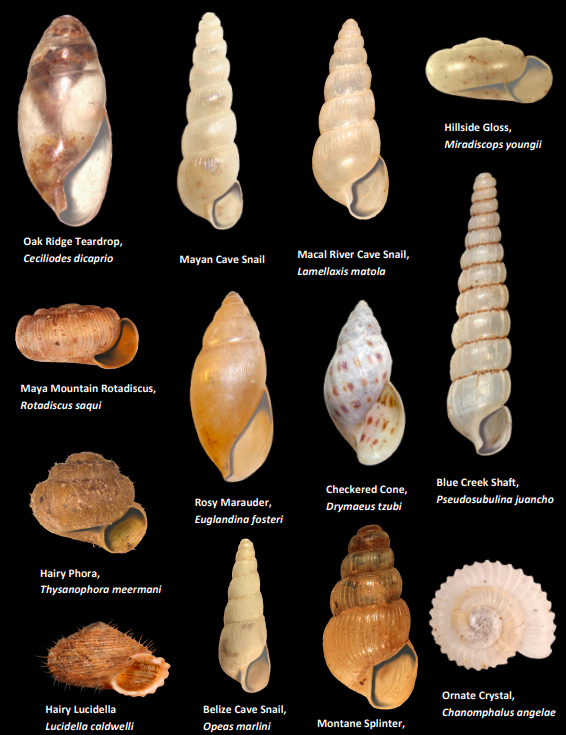- Only 24 species of land snails were previously known from Belize, but a decade-long study that started in 2006 has uncovered 135 more, including 17 that are new to science.
- Researchers and Belizean biological field technicians dug through leaf litter, went deep inside caves and sinkholes, and explored some of the remotest parts of Maya Mountains to look for land snails, naming some of the new ones after celebrities like Leonardo DiCaprio and Jeff Corwin.
- While the biggest threat to the country’s land snails is habitat loss due to deforestation for agriculture and settlements, chemical drift from banana and orange farms also poses a danger to the animals’ survival, researchers say.
The tiny nation of Belize on the eastern coast of Central America is famed for its sparkling blue waters and rich marine life. But it has much more to offer: a rich diversity of land snails, some of which are extremely rare.
Where previously only 24 species of land snails were known from Belize, a 10-year study that started in 2006 has uncovered 135 more. Some 17 of these are new to science, snail experts report in the book “Land Snails of Belize: A Chronicle of Diversity and Function,” published last year.
Among the newly described species is the Belize drum (Eucalodium belizensis), a land snail that researchers say could be “one of the rarest animals on planet due to its range restriction.”
The snail, which researchers found in 2013, has a shell that’s substantially heavier than its own body weight, causing it to move awkwardly.
“It was first discovered in the Maya Mountains of southern Belize about a half day’s walk from the remote village of San Jose” in Toledo district, said Dan Dourson, a biologist with the Belize Foundation for Research and Environmental Education (BFREE), who described the snail along with the late Fred G. Thompson, curator emeritus at the Florida Museum of Natural History.
“During the study, we enlisted the help of a well-known Belizean field technician, Valentino Tzub, a Q’eqchi’ (Kekchi) Maya to collect land snails in that region,” Dourson said. “He found only a handful of shells at one location including the only live specimen of the animal in existence. Additional searches failed to turn up any more of this rare animal.”

Over the course of their decade-long study, Dourson, his wife and snail expert Judy Dourson, and Ron Caldwell, a retired biology professor associated with BFREE, worked with Belizean biological field technicians like Tzub to search for land snails in the country. They dug through leaf litter, went deep inside caves and sinkholes, and explored some of the remotest parts of Maya Mountains, every expedition revealing surprises.
During one expedition into Bladen Nature Reserve, a protected area on the Maya Mountains, for example, Dan Dourson and his colleagues chanced upon a large, 100-meter-deep (330-foot) sinkhole, not uncommon in Belize. This limestone-rich sinkhole had “land snail friendly geology,” so in 2016, Dourson teamed up with cavers, rock climbers and other biologists to survey the sinkhole’s residents. Their search revealed two species that were new to science: the Bladen gloss (Miradiscops bladenensis), and a still unnamed specimen from the genus Euglandina, Dourson said.
As for the other newly described species, the researchers named some after celebrities and conservation-minded Belizeans. They named one rare species of snail Cecilioides dicaprio, or oak ridge teardrop, in honor of Hollywood actor Leonardo DiCaprio “for his environmental activism, commitment to sustainable tourism in Belize.” They named another rare species Leptopeas corwinii, or Mayan cave snail, currently known only from Blue Creek Cave in Belize, after the U.S. conservation biologist and TV host Jeff Corwin. Another rare snail species, known only from a sinkhole in Macal River Gorge, was named Lamellaxis matola, or Macal River cave snail, after Sharon Matola, the founder and director of Belize Zoo.

In all, the researchers have added nearly 160 species of land snails to their book, including 17 new-to-science species described there for the first time. Three species, including the Belize drum, were recently described in scientific journals, while some others await more detailed descriptions.
“This book is an extremely nice contribution to our knowledge of the Central American malacofauna,” Abraham Bruere, a research associate at the Naturalis Biodiversity Center in Leiden, in the Netherlands, who peer-reviewed the book, wrote in a blog post. “It is suitable both for both the ‘serious’ malacologist and for a layman, thanks to the very accessible way the book was designed.”
Snails are rarely seen as charismatic animals. But where they live, they play critical roles. They are an important food for many animals like other carnivorous snails, birds, shrews, mice, snakes and even humans. Moreover, their shells are crucial sources of calcium. In the Netherlands, for instance, a decline in the number of land snails is thought to have caused the population of the great tit to also go down — research has shown that fewer snail shells in the birds’ diet cause them to lay eggs with thinner shells that are more prone to breaking, which in turn reduces their reproductive success rate.
In Belize, the biggest threat to land snails is habitat loss due to deforestation for agriculture and settlements, Dourson said. But chemical drift from banana and orange farms is also threatening the animals’ survival.
“Land snails, primary consumers of detritus and vegetation, sequester chemicals in the mid-gut, so drift from agricultural applications of herbicides and pesticides can have lasting effects on land snail population and other species like birds that feed on land snails,” Dourson said.
With the book published, the Doursons and Caldwell are now raising awareness about land snails in Belize.
In February, the researchers in a joint venture with BFREE conducted a series of workshops for tour guides, biologists, naturalists and professors in the country. These workshops, Dourson said, were “designed to inform them about this unique group of organisms and further increase their knowledge.”
“Much remains to be discovered and explored in Belize and the team will no doubt continue to add new information,” he added.

Citation:
Dourson, D. C., Caldwell, R. S. and Dourson, J. A. Land Snails of Belize, Central America: A Chronicle of Diversity and Function. Goatslug Publications (January 10, 2018).














